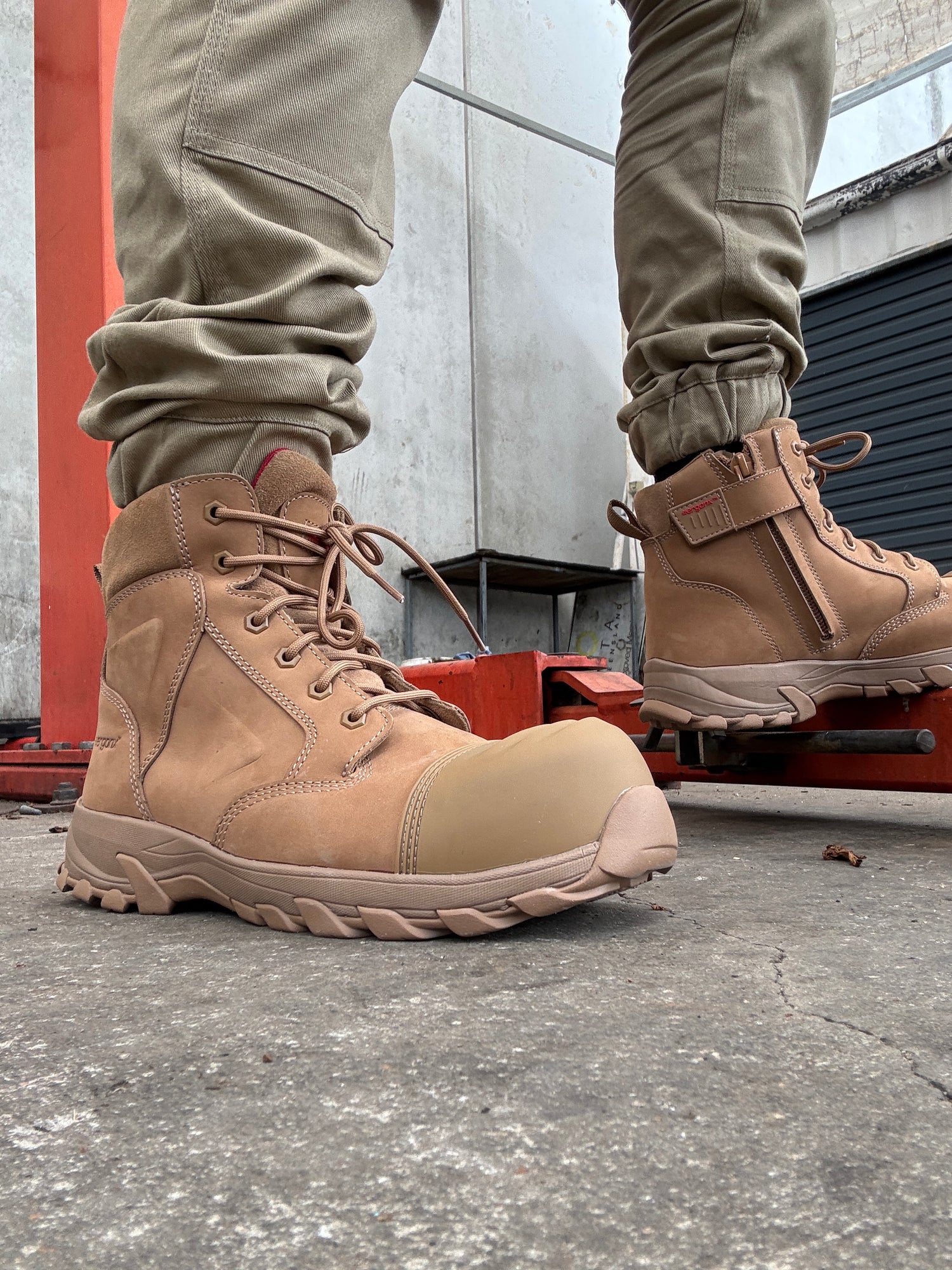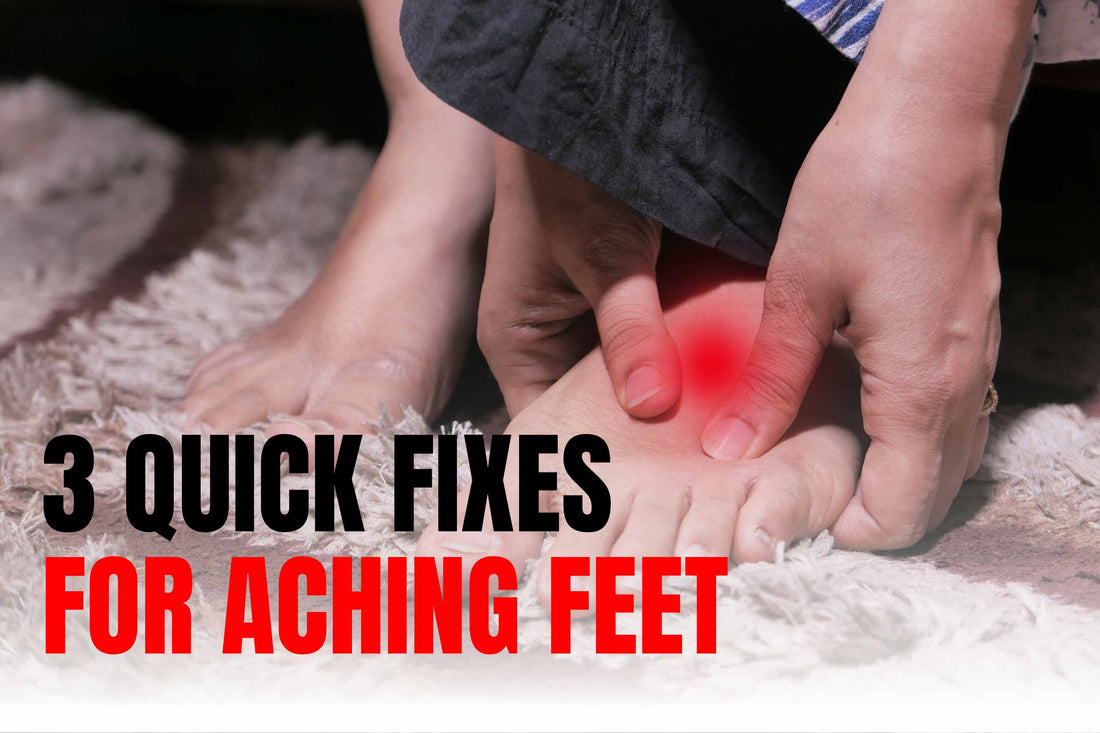On the job site, aching feet, heel pain, and burning arches can ruin your focus and productivity. When there’s no time for new shoe inserts, comfortable footwear, or rest at home, these are 3 quick fixes for aching feet you can do on-site.
Whether you're dealing with plantar fasciitis, foot pain, or just general muscle fatigue after long hours, here’s what you can do right now — without leaving the site.
1. Stretch Your Calf Muscles to Release Tension
One of the fastest ways to reduce foot pain and pressure is by stretching your calf muscles. Tight calves pull on the heel bone and plantar fascia, contributing to heel pain, especially in those with flat feet, very high arches, or plantar fasciitis.
How to stretch on-site:
- Find a ledge or low step
- Lower your heel down off the edge
- Hold for 30 seconds per leg, repeat 3 times
- Do this at Smoko or lunch
This improves blood flow, relieves pressure in the plantar fascia, and reduces inflammation in the soft tissues. A proper calf stretch can reduce stress in your joints and make a noticeable difference in how your feet feel throughout the day.
2. Use a Temporary Heel Raise
If stretching alone isn’t enough, try adding a temporary heel raise inside your work boots. This helps relieve tension on the plantar fascia, achilles tendon, and surrounding muscles, giving you pain relief during tough shifts.
What to use:
- A gel heel pad
- Folded material or foam
- A podiatry-grade insert if available
By elevating the heel, you reduce pull on the fascia and help mitigate sharp pain from heel spurs or plantar fasciitis flare-ups. This is not a long-term treatment, but a great fix for sore feet and foot pain during emergency situations.
3. Use Anti-Inflammatories and Ice When You Get Home
While not exactly an on-site fix, managing heel pain begins with what you do post-shift. Applying ice and taking nonsteroidal anti inflammatory drugs (NSAIDs) like ibuprofen can help reduce swelling, soothe inflammation, and ease discomfort caused by foot conditions.
Evening relief routine:
- Ice for 15–20 minutes after physical activities
- Take pain relievers as needed (consult your doctor)
- Elevate your feet to improve blood flow
- Avoid going barefoot on hard surfaces
If you’re experiencing persistent pain, speak to a podiatrist or health professional about custom shoe inserts and more advanced treatment options.
Why These Fixes Work
These on-site solutions address the root causes of foot pain, especially plantar fasciitis, heel pain, and toe pressure. By loosening tight calf muscles, reducing tension in the plantar fascia, and offloading the heel, you can maintain foot health even in strenuous activities.
Whether you suffer from rheumatoid arthritis, nerve damage, or simple overuse, these three steps can provide short-term pain relief when you’re stuck with ill fitting footwear or can't immediately wear shoes with the right support.
When the main symptom is aching or pain in your heel, don’t ignore it. Early action — even something as simple as a stretch or an ice pack — can keep foot conditions from worsening and help you get through your day on-site without needing a break or risking further injury.


